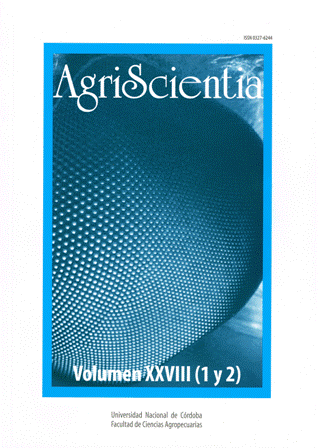Impact of the production level, calving season and type of service on the 100-day cumulative pregnancy rate of dairy cows in Argentina
Main Article Content
Abstract
The aim of this study was to estimate using a multiple logistic regression the relative contribution of factors affecting the probability of getting pregnant at the first 100 days of milk production in Argentine dairy herds. The factors considered were milk production level, lactation number, calving season, type of service used, artificial insemination (AI), natural breeding, or combined, and the interaction between type of service and level of production. The 291 Dairy farms (162.116 lactations) are users of the software Dairy Comp 305 herd-management. This software has a production estimator called 305 mature equivalent to standardize records from different lactation numbers. The analyzed variables in the model were statistically significant. Cows of lower milk production have more chances to get pregnant than those with higher milk production. Cows that calves in colder seasons have more probabilities to get pregnant than those calves in hottest seasons. The relation was quadratic between the probability of getting pregnant at 100 days in milk and the number of lactation. The cumulative pregnancy rate at 100 days was greater with natural service, compared to AI but, the AI was related with greater levels of milk production. Therefore, the results suggest that new reproductive management designs specifically developed for given productive levels could increase the overall reproductive efficiency.
Article Details
How to Cite
Impact of the production level, calving season and type of service on the 100-day cumulative pregnancy rate of dairy cows in Argentina. (2011). AgriScientia, 28(2), 127-135. https://doi.org/10.31047/1668.298x.v28.n2.2790
Issue
Section
Articles
How to Cite
Impact of the production level, calving season and type of service on the 100-day cumulative pregnancy rate of dairy cows in Argentina. (2011). AgriScientia, 28(2), 127-135. https://doi.org/10.31047/1668.298x.v28.n2.2790





